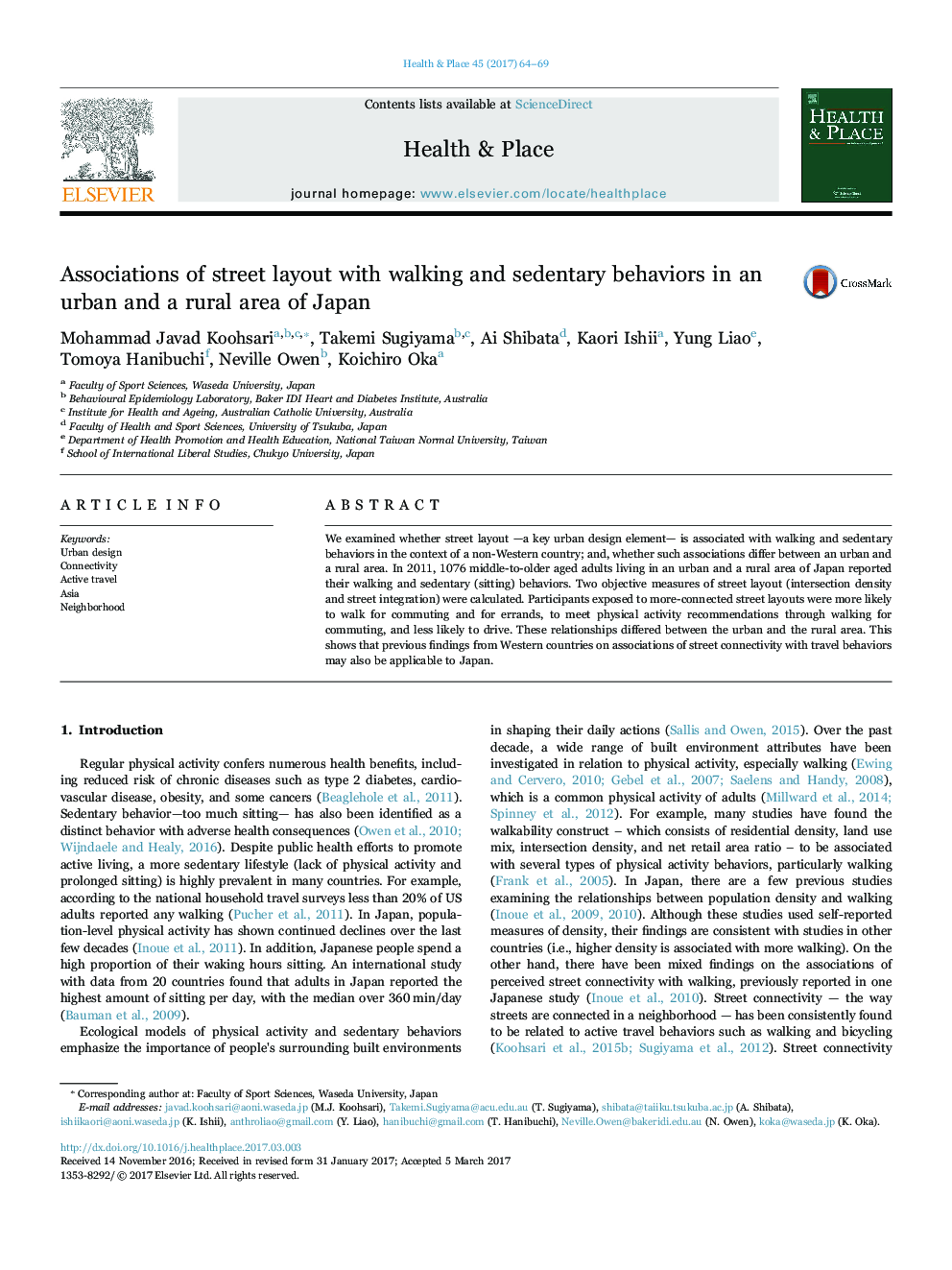| Article ID | Journal | Published Year | Pages | File Type |
|---|---|---|---|---|
| 5114796 | Health & Place | 2017 | 6 Pages |
Abstract
We examined whether street layout -a key urban design element- is associated with walking and sedentary behaviors in the context of a non-Western country; and, whether such associations differ between an urban and a rural area. In 2011, 1076 middle-to-older aged adults living in an urban and a rural area of Japan reported their walking and sedentary (sitting) behaviors. Two objective measures of street layout (intersection density and street integration) were calculated. Participants exposed to more-connected street layouts were more likely to walk for commuting and for errands, to meet physical activity recommendations through walking for commuting, and less likely to drive. These relationships differed between the urban and the rural area. This shows that previous findings from Western countries on associations of street connectivity with travel behaviors may also be applicable to Japan.
Related Topics
Health Sciences
Medicine and Dentistry
Public Health and Health Policy
Authors
Mohammad Javad Koohsari, Takemi Sugiyama, Ai Shibata, Kaori Ishii, Yung Liao, Tomoya Hanibuchi, Neville Owen, Koichiro Oka,
